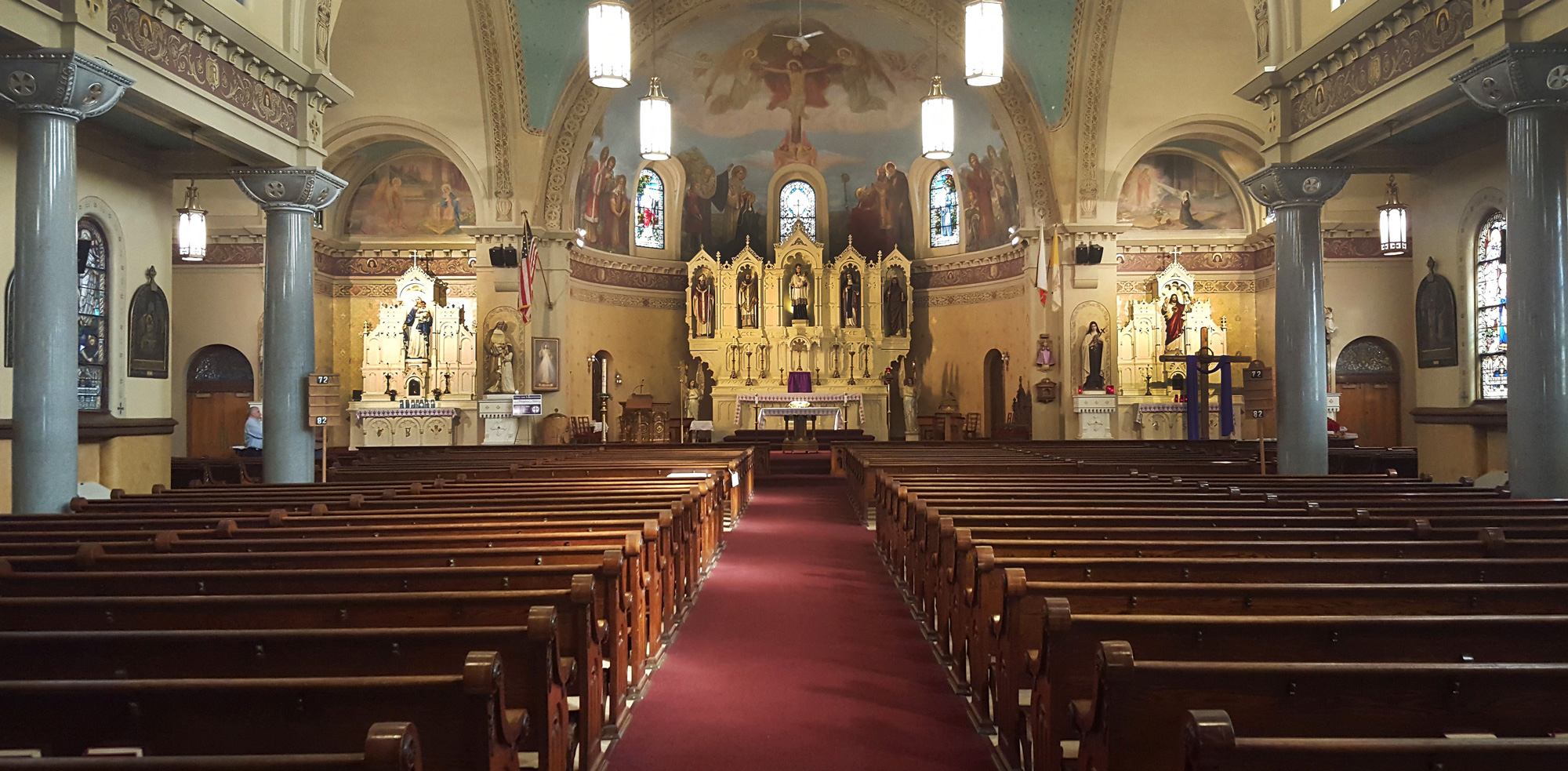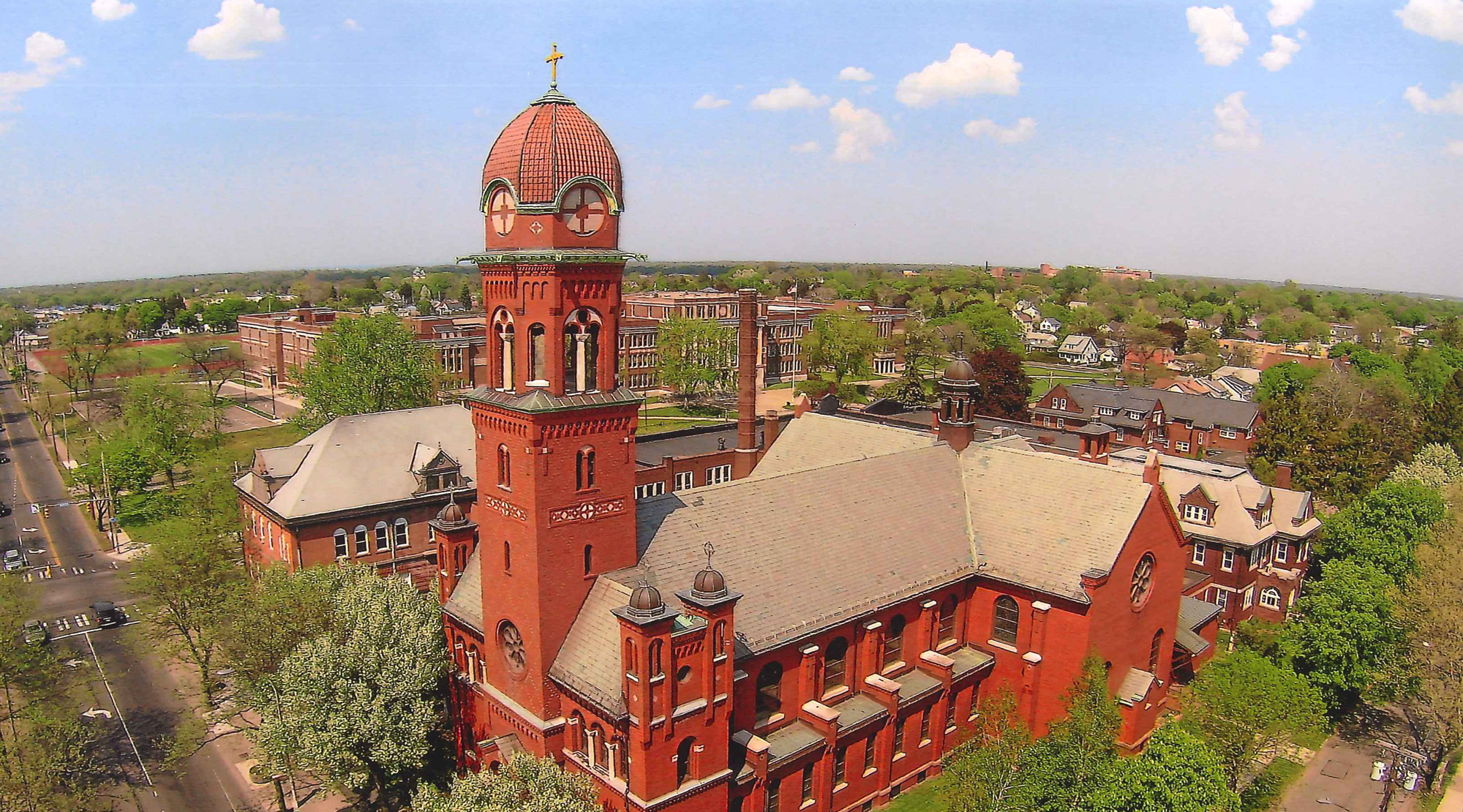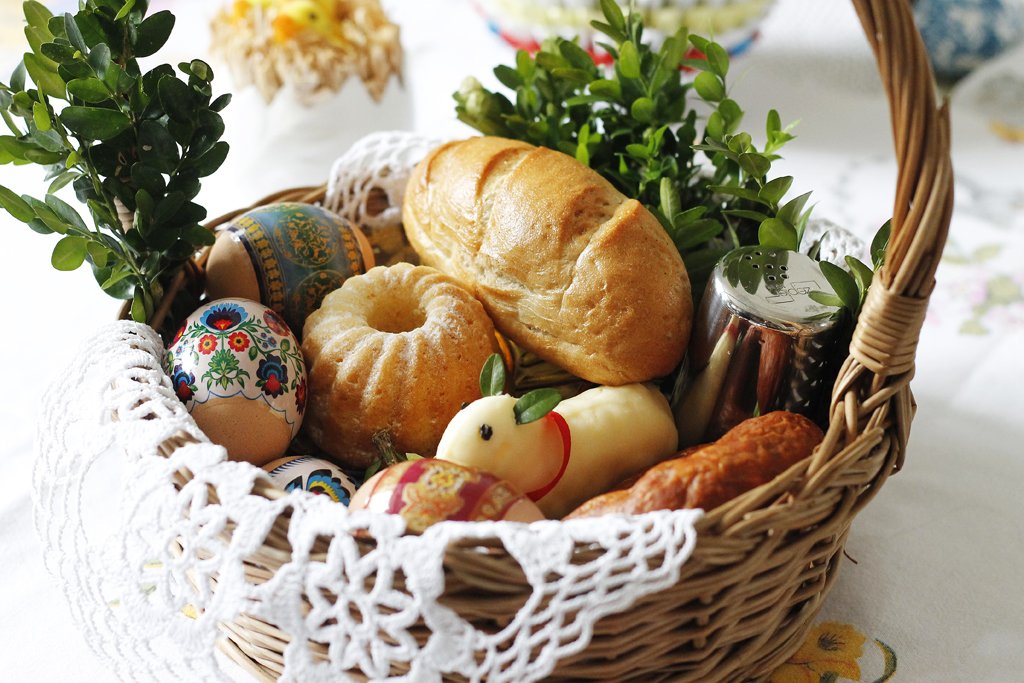In many Eastern European countries, it is a tradition to have a basket of food blessed on Holy Saturday or Easter Sunday. In Poland, for example, the blessing of the baskets is known as święcenie pokarmow wielkanocnych, a practice dating to the 15th century or earlier, and one which is still maintained by most families in Poland on Holy Saturday.
St. Stanislaus Kostka Church will be holding Food Blessing presided by
Most Reverend Bishop Salvatore Matano on Holy Saturday at 1 pm.
The food items in the Easter basket, as well as at the Easter Sunday breakfast where the blessed food is eaten, have special significance.
Decorating the Basket
A lot of thought, time, and care is put not only into the foods that will go into the basket but also how the basket is assembled. The basket is lined with an embroidered cloth or traditional folk fabric. Once the basket is filled, it is covered with a white linen cloth (some have a colorfully crocheted edging or embroidered design) representing the shroud of Christ. The basket may then be decorated with sprigs of boxwood (bukszpan) or Polish “palms ” made from dried flowers and colorful paper.
Filling the Basket
A typical Eastern European Easter basket would include any of these symbolic foods.
- Bacon–boczek/słonina. A symbol of the abundance of God’s mercy.
- Bread—chleb. Usually a braided sweet bread type, representing the staff of life given by God.
- Easter bread–babka. A round loaf of rich, eggy, yeast dough with raisins reminiscent of the risen Lord.
- Butter–masło. Dairy products are included to celebrate the end of Lent and the richness of our salvation. Butter is often shaped into a lamb (symbolic of the Paschal Lamb) and known as a baranek. (When the baranek is made of sugar, it is known as baranek cukrowy wielkanocny.)
- Candle–swieca. The candle symbolizes Jesus, the “light of the world,” and can be lit when the priest blesses the baskets of food.
- Cheese–ser. Cheese is a symbol to remind Christians of moderation.
- Colored eggs–pisanki (pee-SAHN-kee). Both colored and uncolored hard-cooked eggs indicate hope, new life and Christ rising from his tomb.
- Ham–szynka. Meats are symbolic of great joy and abundance in celebration of Christ’s resurrection.
- Sausage–kiełbasa. The sausage links are symbolic of the chains of death that were broken when Jesus rose from the dead, as well as of God’s generosity.
- Horseradish—chrzan. This is a reminder of the bitterness and harshness of the Passion of Jesus, and the vinegar it is mixed with symbolizes the sour wine given to Jesus on the cross.
- Salt–sól. Salt is represented to add zest to life and preserve us from corruption.
- Sweets–słodycze. Sweets suggest the promise of eternal life or good things to come.







Recent Comments